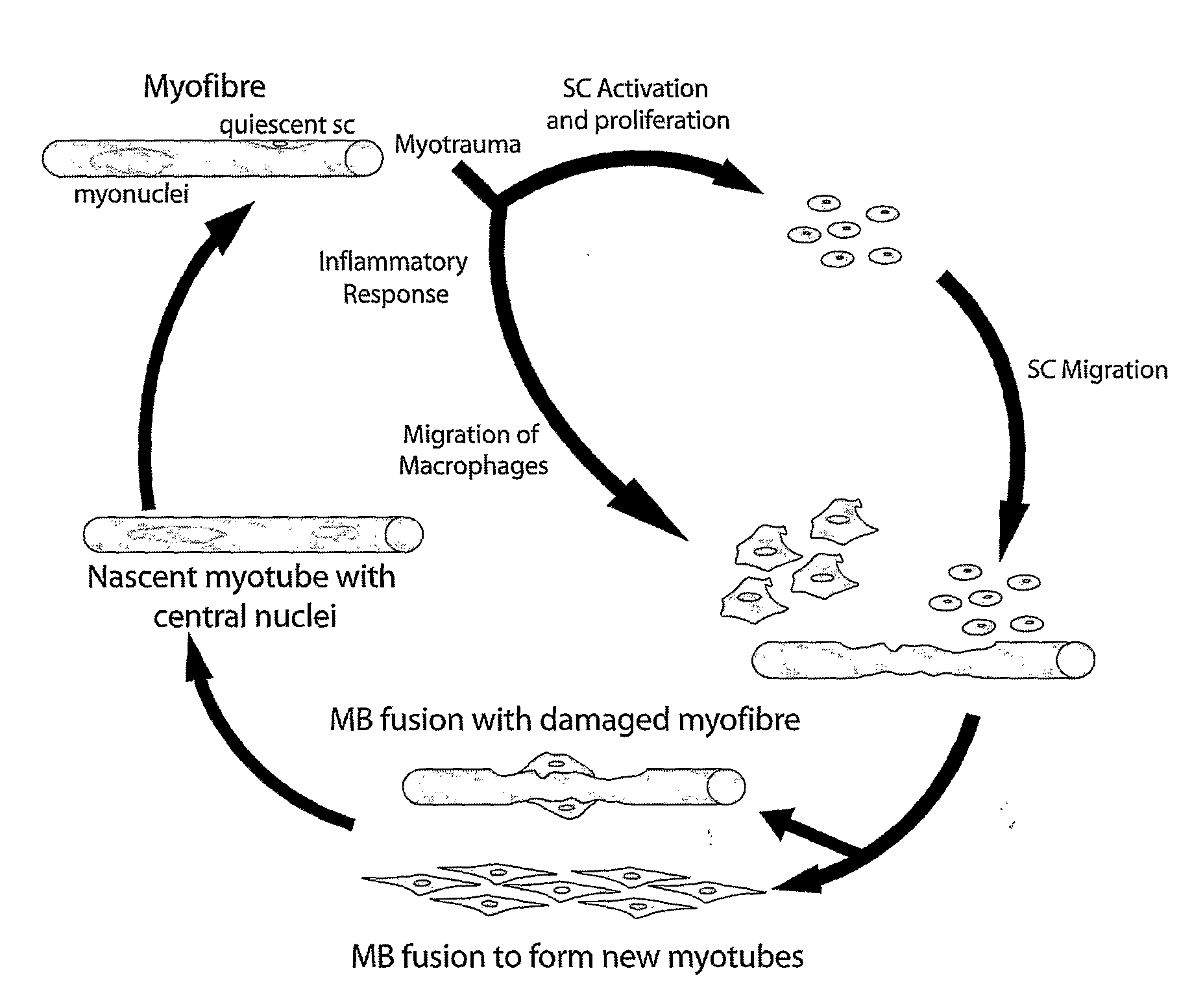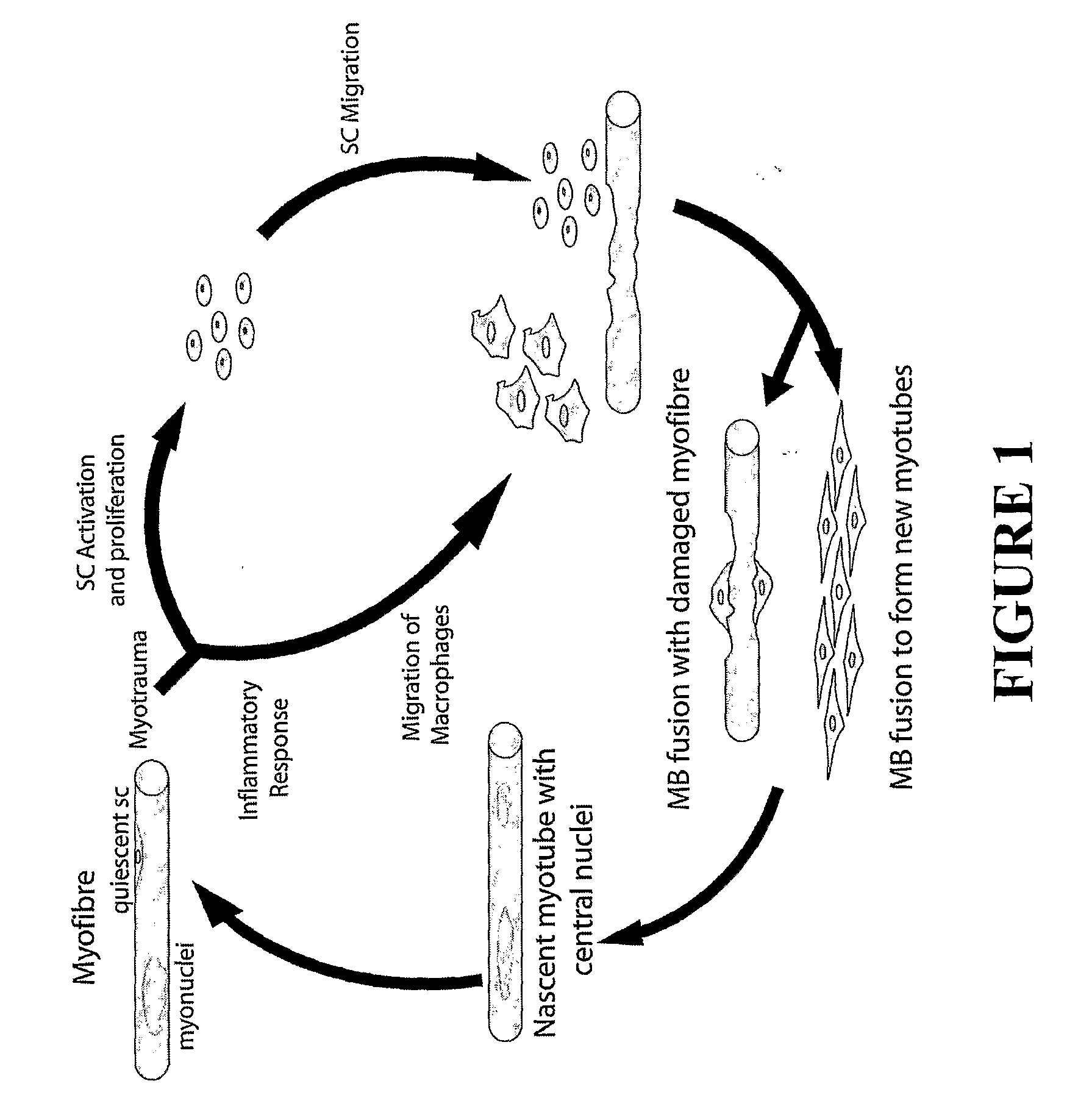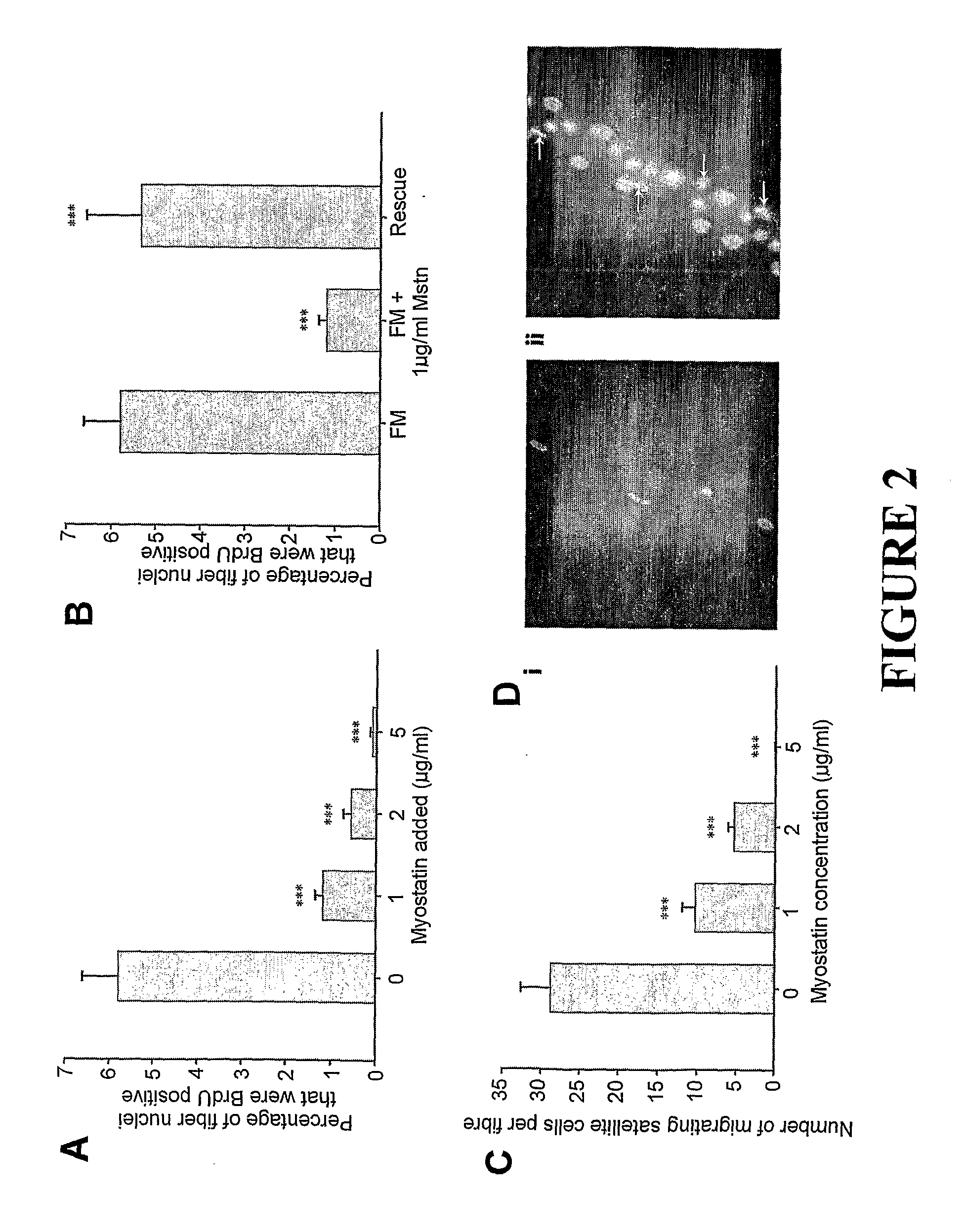Use of Myostatin (GDF-8) Antagonists for Treatment of Sarcopenia (Age-Related Muscle-Wasting)
a technology of myostatin and gdf-8, which is applied in the direction of gene therapy, antibody ingredients, peptide/protein ingredients, etc., can solve the problems of no growth factor clinical use, net loss of muscle tissue, and less efficient muscle regeneration cycle, etc., and achieve the effect of improving the activation of satellite cells
- Summary
- Abstract
- Description
- Claims
- Application Information
AI Technical Summary
Benefits of technology
Problems solved by technology
Method used
Image
Examples
example 1
Myostatin Regulates Satellite Cell Activation
Methods
In Vivo BrdU Labelling of Satellite Cells
[0101]Satellite cell activation was investigated by in vivo 5-bromo-2′-deoxy-uridine (BrdU) labelling. Wild-type and myostatin-null mice were intraperitoneally injected with BrdU (Roche) (30 mg / kg) as a single pulse 2 hours before euthanizing. Satellite cells were isolated following an adapted protocol of Yablonka-Reuveni and Nameroff (1987). Briefly, 1 and 6 month old wild-type and myostatin-null mice (n=10 per group) were killed by CO2 gas followed by cervical dislocation. Hind limb muscle were dissected out, minced and digested in 0.2% (w / v) type 1A collagenase (>260 CDU / mg, Sigma) in Dulbecco's modified Eagle medium (DMEM) (Invitrogen) for 90 minutes at 37° C. The muscle slurry was triturated then passed through a 70 μM filter (BD Biosciences) before loading onto 70% and 40% Percoll gradients (Sigma) and centrifuged at 2000×g for 20 minutes at 25° C. The interface between the two gradien...
example 2
Myostatin Antagonists Increase Inflammatory Response and Chemotaxis of Satellite Cells
[0114]Sarcopenia is a form of muscle wasting associated with old age. With ageing, the reduction in muscle mass is accompanied by atrophy of muscle fibres. These events not only affect muscle fibres but also satellite cells, leading to reduced ability of muscle to regenerate. This is primarily due to loss of propensity of satellite cells to activate in response to injury and to the need for normal replenishment of muscle fibres. In addition, another major step of regeneration, inflammatory response to muscle injury, is also reduced in old age and is responsible for part of the symptoms of sarcopenia. Myostatin a potent negative regulator of myogenesis is shown to increase in circulation during ageing. Here we present data that confirms that increased myostatin levels are inhibitory to the activation of satellite cells and chemotaxis of inflammatory cells. We also provide evidence that a strong myos...
example 3
Antagonizing Myostatin Results in Reduced Fibrosis and Enhanced Muscle Regeneration
Methods
Cut Injury Model
[0132]A 3 mm transversal incision was made on the left tibialis anterior (TA) of each mouse (wild type and myostatin null). On days 0, 3, 5, and 7 after injury the TAs of wild type were injected with either 350 protein at 2 μg / g body weight (total of 85 μg / mouse) or saline at the site of injury (into the TA muscle). The uninjured right TA was used as control. The injured and control muscle were collected at day 2, 4, 7, 10 and 21 after cutting and their weights determined. The extent of collagen deposition in regenerations and regenerated cut muscle tissue was also measured by Van Geisen staining.
SE Microscope
[0133]The muscle samples were cleaned of fat and tendons and fixed in 10 ml of 0.1 M phosphate buffer (pH 7.4) containing 2.5% (v / v) glutaraldehyde for 48 hours with gentle rocking. The glutaraldehyde was washed off in PBS for 1 hour, before being transferred to 50 mls of 2...
PUM
| Property | Measurement | Unit |
|---|---|---|
| pH | aaaaa | aaaaa |
| concentration | aaaaa | aaaaa |
| thick | aaaaa | aaaaa |
Abstract
Description
Claims
Application Information
 Login to View More
Login to View More - R&D
- Intellectual Property
- Life Sciences
- Materials
- Tech Scout
- Unparalleled Data Quality
- Higher Quality Content
- 60% Fewer Hallucinations
Browse by: Latest US Patents, China's latest patents, Technical Efficacy Thesaurus, Application Domain, Technology Topic, Popular Technical Reports.
© 2025 PatSnap. All rights reserved.Legal|Privacy policy|Modern Slavery Act Transparency Statement|Sitemap|About US| Contact US: help@patsnap.com



